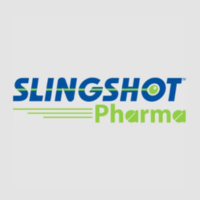In today’s highly competitive online retail landscape, E-commerce PPC Advertising has become essential for brands looking to gain visibility, drive targeted traffic, and maximize conversions. As an advertiser, utilizing ad networks strategically can significantly improve your return on investment (ROI) and streamline your marketing funnel.
Whether you’re managing a large-scale product catalog or launching a niche online store, effective PPC advertising for e-commerce can unlock substantial growth. This guide outlines 10 proven strategies that advertisers can implement on e-commerce advertising platforms to generate maximum results from every dollar spent.
>>Start Advertising Today<<
Understanding E-commerce PPC Advertising
E-commerce PPC (Pay-Per-Click) advertising is a paid media model where advertisers pay a fee each time their ad is clicked. It’s a cornerstone of digital marketing for e-commerce businesses, enabling brands to appear at the top of search results, social media feeds, and relevant websites via ad networks.
Benefits of PPC for E-commerce
- Immediate visibility in search engines and digital channels
- Highly targeted audience reach through keyword and behavioral data
- Full control over ad spend, placements, and bidding
- Scalable results based on real-time data
Choose the Right E-commerce Advertising Platforms
Not all e-commerce advertising platforms offer the same benefits. As an advertiser, it’s crucial to pick ad networks and platforms that align with your product type, target audience, and campaign goals.
Top Ad Networks for E-commerce Advertisers
- Google Ads: Leverage Search, Display, and Shopping networks for high purchase intent.
- 7Search PPC: Affordable, keyword-targeted ads designed for small to mid-sized e-commerce advertisers with flexible budget options.
- Meta Ads (Facebook & Instagram): Excellent for visual products and behavior-based targeting.
- Amazon Ads: A must for sellers active on the Amazon marketplace.
- TikTok Ads: Ideal for Gen Z and visually rich product promotions.
- Microsoft Ads: Lower competition, similar reach to Google for search-based advertising.
Master Keyword Targeting for High Intent Buyers
PPC for e-commerce thrives on targeting the right keywords. Focus on transactional and long-tail keywords that reflect buyer intent.
Types of Keywords to Target
- Transactional: “buy leather wallet online,” “best wireless earbuds under $100”
- Brand + Product: “Samsung 4K TV deals”
- Long-tail: “eco-friendly yoga mat for beginners”
Keyword Research Tools
- Google Keyword Planner
- SEMrush
- Ubersuggest
- Ahrefs
Consistently refine your keyword lists to reduce irrelevant traffic and boost ROI.
Use High-Converting Ad Creatives
Strong ad creatives play a major role in e-commerce PPC advertising success. Your creatives should align with your brand, clearly showcase product benefits, and include persuasive CTAs.
Elements of Effective Ad Creatives
- Eye-catching visuals
- Compelling headlines
- Value-driven descriptions
- Urgency-based CTAs (e.g., “Limited Offer,” “Buy Now”)
A/B Testing Creatives
Test different visuals, messaging, and CTA placements to discover what resonates best with your audience. Use winning combinations for scaling.
Build Landing Pages That Convert
Getting clicks is one thing—converting that traffic is where ROI happens. Optimize your landing pages for both UX and conversion rate.
Key Features of High-Performance Landing Pages
- Clear product imagery and descriptions
- Fast-loading design
- Mobile responsiveness
- Simplified checkout process
- Trust signals (reviews, badges, money-back guarantees)
Ensure alignment between the ad copy and the landing page experience to boost Quality Score and lower CPC.
Leverage Ad Network Tools for Better Targeting
Most ad networks offer advanced targeting tools and AI-based automation. Use these to reach users based on demographics, behavior, location, and more.
Examples of Targeting Tools
- Lookalike Audiences (Meta, TikTok)
- In-Market Segments (Google Ads)
- Retargeting Lists (All major platforms)
- Shopping Feed Integration (Google Merchant Center)
Geo & Device Targeting
Adjust bids for specific regions or devices. For example, increase bids for mobile users if your product page is mobile-optimized.
Retarget Abandoned Visitors with Dynamic Remarketing
Abandoned cart rates in e-commerce can exceed 70%. Dynamic remarketing allows you to re-engage those users with personalized ads featuring the exact products they viewed.
Why Dynamic Remarketing Works
- Personalized product recommendations
- Higher CTR and conversion rates
- Shortens the purchase cycle
Platforms that Support Dynamic Remarketing
- Google Ads
- Meta Ads
- Microsoft Ads
- Criteo
Use Automated Bidding Strategies
Manual bidding can be effective, but as your campaigns scale, automation becomes essential.
Smart Bidding Options in Google Ads
- Target ROAS
- Maximize Conversions
- Enhanced CPC
- Target CPA
Benefits of Smart Bidding
- Adapts to real-time auction data
- Saves time and reduces human error
- Improves ROI by prioritizing high-converting segments
Monitor and Optimize Ad Performance Continuously
Successful PPC advertising for e-commerce involves continuous optimization. Monitor campaign data to identify underperforming areas.
Key Metrics to Track
- Click-Through Rate (CTR)
- Conversion Rate
- Cost Per Click (CPC)
- Return on Ad Spend (ROAS)
- Quality Score (Google Ads)
Optimization Tips
- Pause low-performing ads
- Improve ad relevance and Quality Score
- Adjust bids based on performance data
- Refresh creatives regularly
Use Negative Keywords to Improve ROI
Negative keywords help prevent your ads from showing on irrelevant search queries, reducing wasted spend.
Examples of Negative Keywords
- “free”
- “used”
- “how to make” (for DIY queries)
Regularly Update Negative Lists
Review your search terms report weekly to eliminate poor-performing keywords and keep your campaign focused.
Integrate Cross-Channel Campaigns for Maximum Impact
Consumers don’t convert in a straight line. Use omnichannel PPC advertising strategies across platforms to stay top-of-mind.
Combine Platforms Like:
- Google Search + Facebook Retargeting
- TikTok Awareness + Instagram Shopping
- Amazon Ads + Google Display Network
Benefits of Cross-Channel PPC
- Broader reach
- Reinforced messaging
- Increased brand visibility
Use UTM tracking and attribution tools to measure cross-channel performance effectively.
Conclusion
In the ever-evolving world of digital marketing, E-commerce PPC Advertising remains one of the most powerful tools at an advertiser’s disposal. When leveraged correctly through smart strategy, optimization, and ad network selection, it delivers scalable, measurable, and highly targeted results.
By applying these 10 proven strategies, you can not only increase your visibility but also significantly boost your ROI, reduce wasted ad spend, and gain a competitive edge in the crowded e-commerce space.
Frequently Asked Questions (FAQs)
What is E-commerce PPC Advertising?
Ans: E-commerce PPC Advertising is a digital advertising model where e-commerce businesses pay ad networks each time a user clicks on their ad. It helps drive targeted traffic to product pages and online stores.
Which is the best ad network for PPC advertising for e-commerce?
Ans: Some of the top platforms include:
- Google Ads for high-intent searches
- Meta Ads (Facebook & Instagram) for retargeting and discovery
- Amazon Ads for marketplace sellers
- TikTok & Pinterest for visually driven, lifestyle products
How much should I spend on PPC for e-commerce?
Ans: Start with a manageable test budget (e.g., $500–$1,000/month). Evaluate ROAS and scale campaigns based on performance and profitability.
How do I reduce my CPC in PPC campaigns?
- Improve your Quality Score
- Use long-tail keywords
- Add negative keywords
- Optimize landing pages for conversions
Can I run PPC ads without a website?
Ans: Yes. If you’re selling on platforms like Amazon or Etsy, you can use native ad networks to run campaigns without a standalone website.
Looking to supercharge your e-commerce growth with high-performance PPC campaigns? Start today by applying these strategies and turn every click into profit.




